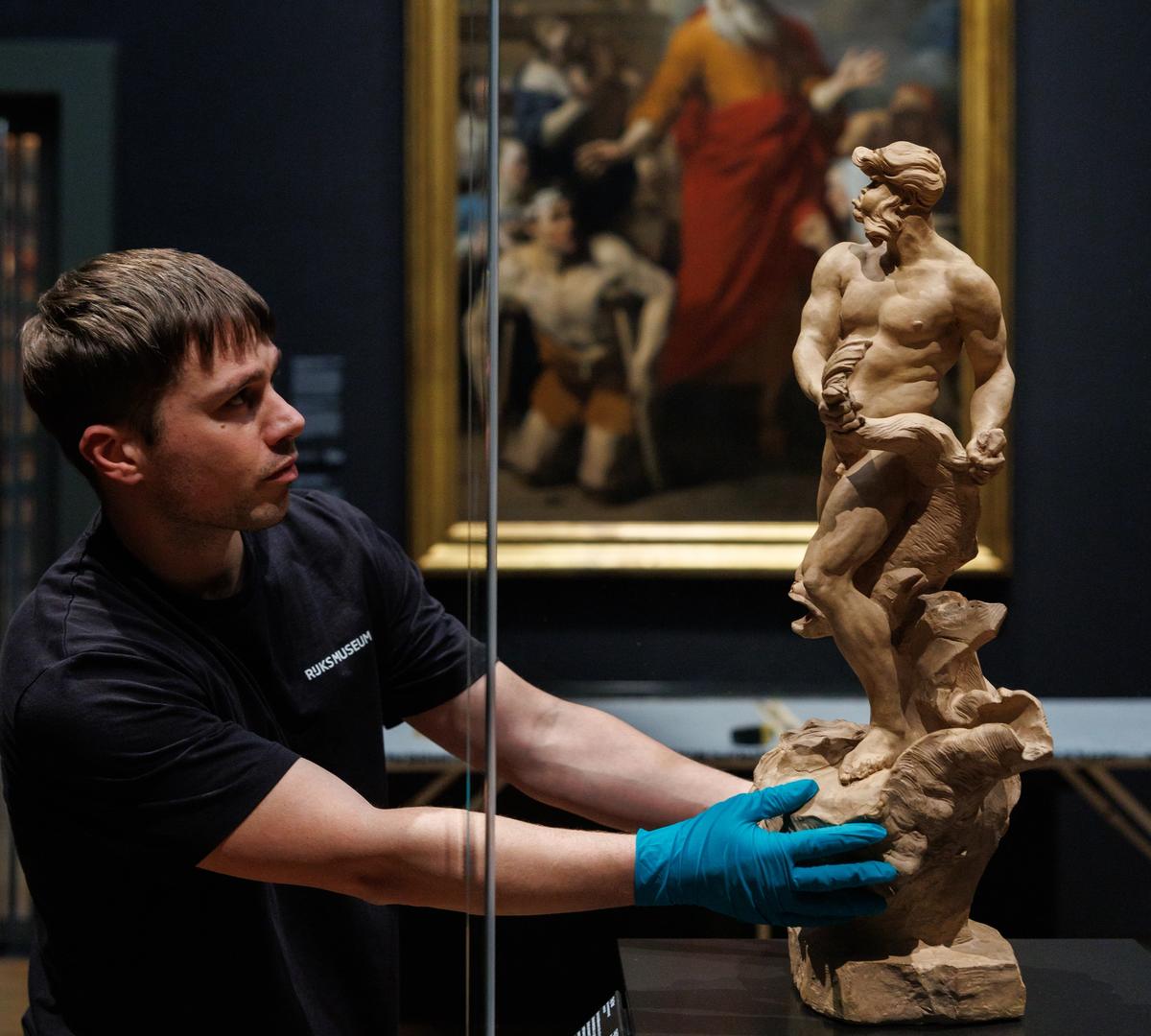For decades, it looked like an unremarkable old statue. But when descendants of the 17th-century cardinal Flavio Chigi had thick layers of dark overpainting removed, they realised they owned an extraordinary sculpture by Gian Lorenzo Bernini—considered the single most important sculptor of the Italian Baroque.
Now, this 72cm terracotta model depicting the wild, mythical sea god Triton is on permanent loan to the Rijksmuseum in Amsterdam, bringing audiences ever closer to the hands of the “virtuoso” Bernini.
The museum’s senior curator of sculpture, Frits Scholten, said the piece is an important link to the thought process of Bernini, who was an architect as well as an artist and lived from 1598 to 1680.
“It’s a sculpture that was in an Italian family for a long time, but covered with [paint], presumably because it had been broken,” Scholten says. “So for that reason, they painted it as if it were a patinated bronze sculpture, the figure dark brown, and the shell on which it stands gild. That obscured, to a certain extent, the quality of the sculpture. But after restoration [in 2018], the handwriting, the style of Bernini came to the fore again, and it was absolutely clear that it was a masterpiece.”
The model—probably the “modella fatto da me” (model made by myself) referenced in an invoice from the artist in 1655—represented Bernini’s initial ideas for a marble statue for a fountain on Piazza Navona, one of Rome’s most important squares, commissioned by Pope Innocent X.
Taco Dibbits, the Rijksmuseum director, says it is a historic addition to the collection: “It is marvellous that, thanks to a private individual, we can now place a sculpture by Bernini on permanent display in the Netherlands for the first time,” he said in a statement. “Bernini had a huge influence on the development of sculpture as an art form.”
The director adds that “many Dutch sculptors travelled to Rome in the 17th century, studied Bernini’s work and were influenced by him. Among them were Artus Quellinus, who later made marble sculptures for Amsterdam’s City Hall, now the Royal Palace on Dam Square.”
Why were models important to Bernini?
Bernini is known for works such as the lifesize Apollo and Daphne in Rome’s Galleria Borghese, designing St Peter’s Square and creating the celebrated Fontana dei quattro fiumi (Fountain of the Four Rivers) on the Piazza Navona in 1651—after which the pope asked him to embellish its two other fountains.
Scholten said the artist’s key qualities were the drama and movement in his work, created with the help of extensive wax or terracotta models. “He’s theatrical and dynamic, constantly using theatrical tricks to involve his audience—trying to do what painters can but, as a sculptor, pushing the limits of sculpture,” he said.
This model, for instance, has a more expressive face than in the final marble sculpture made by Bernini’s assistant, Giovanni Antonio Mari. It is less refined than another terracotta model held by the Kimbell Art Museum in Fort Worth, Texas, probably a gift for the pope after the fountain was completed in 1653.
The wind-swept hair of this Triton suggests movement, the expression that of a wild creature from the sea. “He’s thinking about how far he could push the limits within his idea and his design,” said Scholten. “This is more emotional: it’s closer to the fingers and the mind of the sculptor. “


